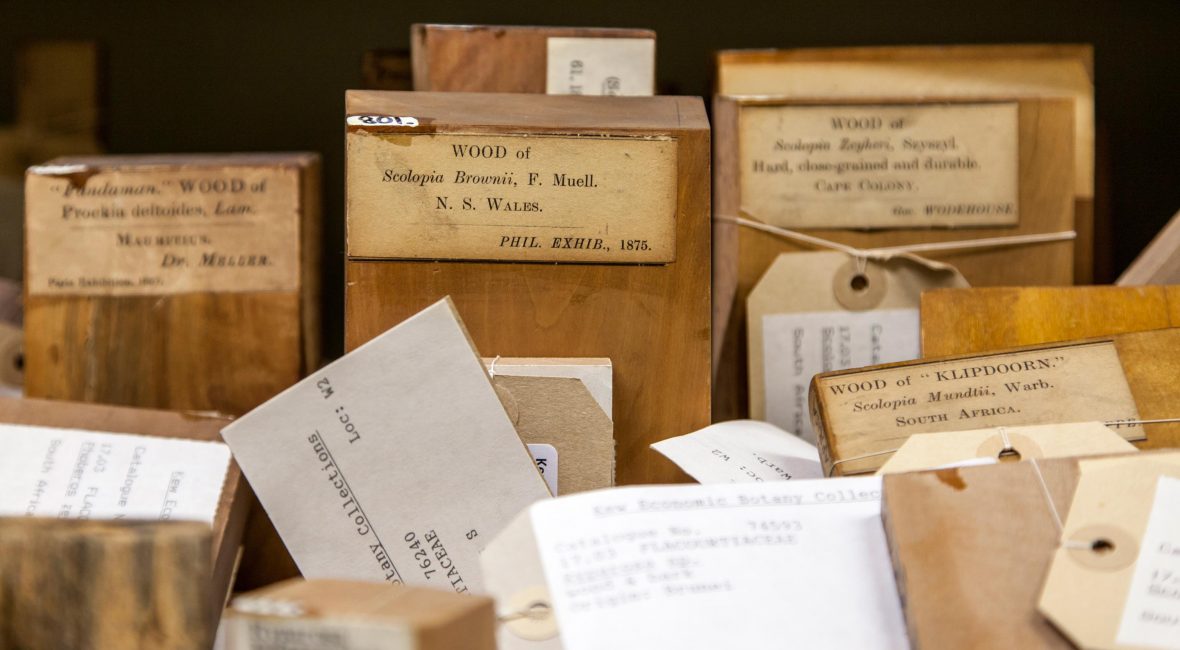Economic botany can, in a nutshell (excuse the pun), be described as the use of plants by people. This relationship spans thousands of years and includes both individuals and cultures – making this subject a rich and fascinating link between botany and anthropology. Economic botany collections can essentially be described using the term biocultural.
The Economic Botany Collection at the Royal Botanic Gardens, Kew holds around 100,000 objects from around the globe. Established as the Museum of Economic Botany by Kew’s first official Director, Sir William Jackson Hooker, in 1847, it was cited as a public repository for ‘all kinds of useful and curious Vegetable Products, which neither the living plants of the Garden nor the specimens in the Herbarium could exhibit’.







